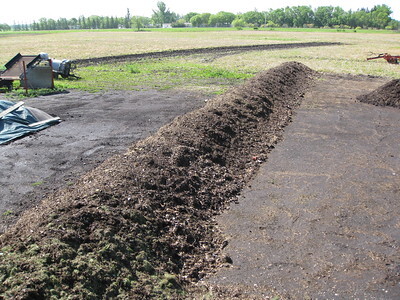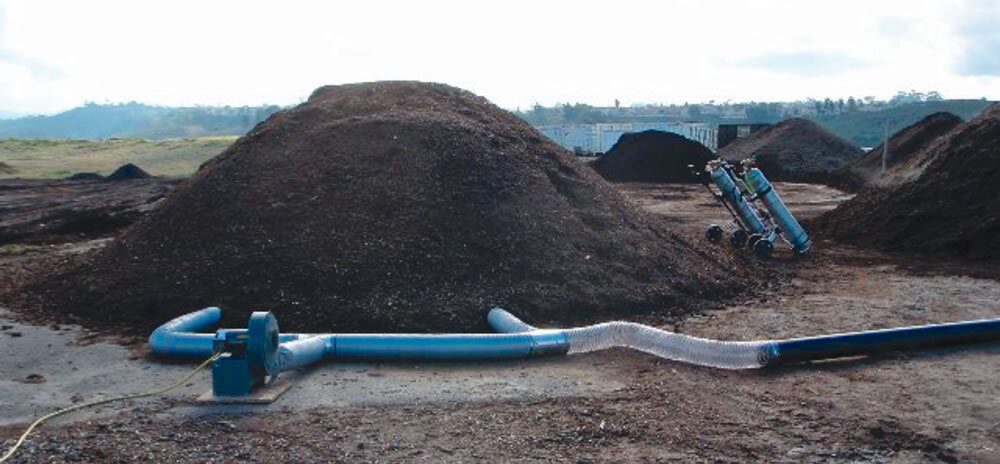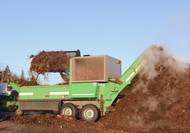How Industrial Composting Works for Certified Compostable Products
Aug 13th 2025
Have you ever wondered what happens after you toss a certified compostable cup into a compost bin? The journey a compostable cup takes from being used to turning into a nutrient-rich soil amendment is a fascinating blend of science, sustainability, and transformation.
When you’re at a stadium, campus cafeteria, or other foodservice establishment that uses compostable packaging, it’s important to know that these establishments will often partner with waste haulers and industrial compost facilities that accept and process certified compostable packaging.
Once the certified compostable cup has been used and tossed into an approved compost collection bin, the material typically makes its way to an industrial compost facility designed to handle organic waste. These facilities may choose to accept a wide range of compostable materials, from food scraps and yard waste to certified compostable foodservice items like cups, cutlery, and takeout containers.
To turn this mixture of organic materials into finished compost, industrial compost facilities can use a few different methods. Two of the most common industrial composting processes are windrow and aerated static pile (ASP).
Windrow composting involves arranging the material in long, narrow piles—called windrows—which are regularly turned by specialized machinery. This turning helps to mix the material and introduce oxygen, which is vital to the decomposition process.
Aerated static pile composting achieves aeration through a system that forces air through the piles using blowers or vacuum systems. This eliminates the need for physical turning while still providing the oxygen that microbes need to do their work.
There are also in-vessel composting options that allow facilities or communities to realize the benefits of industrial composting at a smaller scale. This option is helpful for facilities or communities who would like to compost organic materials but have limited land space.
In these methods, the compost piles are carefully monitored to ensure ideal conditions for microbial activity. Key factors include temperature, moisture, oxygen levels, and the carbon-to-nitrogen ratio. When everything is just right, microbial communities flourish, and the piles heat up. During what's known as the active composting phase, the temperature of the pile can soar to 131–160°F. These high temperatures are a sign of active microbial breakdown, kill off harmful pathogens, and can aid in the disintegration of certified compostable products.
Once this active phase is complete, the compost enters a curing phase, where it is left to mature and stabilize. Finally, it is screened to remove larger non-compostable contaminants or large organic particles that didn’t fully decompose. What’s left is a dark, crumbly, earthy-smelling material that’s full of nutrients and ready to enrich the soil.
So the next time you place that certified compostable cup into the compost collection bin, know that you're not just throwing something away—you’re contributing to a cycle that turns waste into something wonderfully useful: a natural soil amendment that supports healthy plants, sequesters carbon from the atmosphere, reduces landfill waste, and helps close the loop in a more sustainable food system.
Watch our Intro to Composting video to learn more!
Windrow Composting
Aerated Static Pile Composting
If you're using certified compostable packaging outside of a closed loop system, it is important to check with your local compost facility to confirm what materials are accepted into the organics recycling stream in your area. Do not place unacceptable materials into the compost collection bin!
Compost Collection Bin
Did you know? 'Organics recycling', and 'composting', and 'compost' are often used interchangeably, but have slightly different connotations.
-Organics Recycling: Is also known as organics diversion, and is the process of collecting and processing organic materials like food scraps, yard waste, and certified compostable products to prevent them from being sent to landfills.
-Composting (or 'to compost): Is the natural process of recycling organic matter, like food scraps, yard waste, and certified compostable products, into a nutrient-rich soil amendment called compost.
-Compost: Is a nutrient-rich soil amendment created through the controlled decomposition of organic matter.
You will see 'organics recycling', 'compost', and 'composting' used interchangeably in our content.

